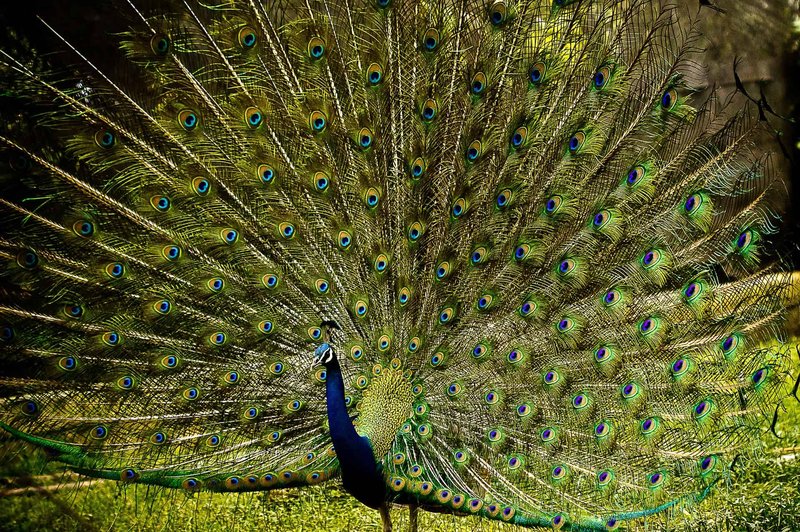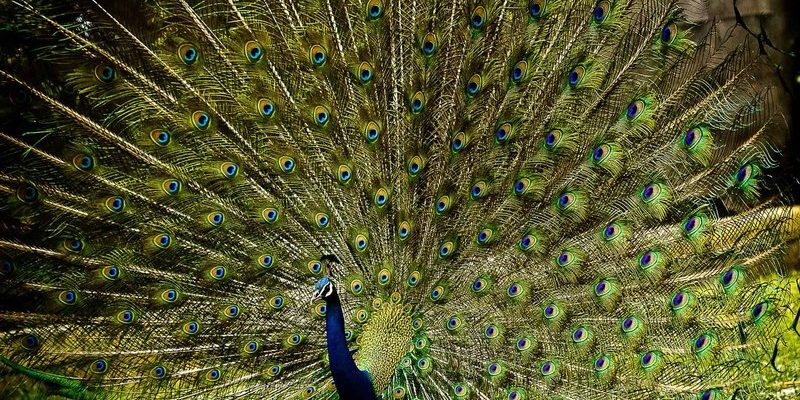
Honestly, understanding how peacocks communicate can be as enchanting as watching them spread their tail feathers. These vocalizations vary widely, from loud screams to soft coos, and they play a crucial role in their social interactions. Whether they’re warning each other of danger or attracting a mate, each sound has its purpose. So, let’s dive deep into the world of peacock vocalizations and unlock the secrets behind their intriguing language.
What Are Peacock Vocalizations?
Peacock vocalizations encompass a range of sounds that these birds use to communicate. These aren’t just noises; they’re essential parts of their social structure. Peafowl, which includes the male peacock, female peahen, and the young peachick, have developed an intricate system of sounds for various situations.
You might be surprised to learn that peacocks have around 20 different calls. Some of these calls are quite loud and sharp, while others are softer and more melodious. The variety in their vocalizations helps them convey different messages, whether it’s a warning to alert others of a predator, a call to attract a mate, or even just a way to establish dominance among peers.
In a way, you can think of peafowl vocalizations as a language that reveals their emotions and intentions. Each sound acts like a word or phrase in this bird dialect, providing rich insights into their lives and social interactions.
Types of Vocalizations
Peacocks have several specific types of vocalizations, each serving its unique purpose. Here are some of the main types:
- Alarm Calls: These are loud, piercing sounds that help alert other peafowl to danger. Imagine a siren going off—it’s a warning that something isn’t right.
- Mating Calls: Male peacocks often use beautiful, melodic calls to attract females. Think of it as singing a love song, showcasing their vitality and charm.
- Contact Calls: These softer sounds help maintain communication between family members or groups of peafowl, similar to how friends check in with each other via a quick text or phone call.
- Discontent Calls: When a peacock isn’t happy about something—like another bird encroaching on its space—they make specific noises to express their feelings. It reminds you of a child saying, “Hey, that’s mine!”
Each of these vocalizations serves a critical role in ensuring peacocks can navigate their environments effectively.
Why Do Peacocks Vocalize?
Peacocks vocalize for a few key reasons, and each reason reflects their instincts and social needs. Understanding these reasons can deepen your appreciation of these remarkable birds.
Firstly, safety plays a significant role in their vocal behavior. When a peacock spots a predator, it emits a sharp alarm call that echoes through the area. This loud noise helps alert other birds, giving them time to locate safety.
Secondly, mating is another crucial factor in vocalizations. During mating season, male peacocks put on a show, and their calls are part of their courtship rituals. The more impressive their songs, the more attractive they seem to potential mates. It’s like a bird version of a talent show!
Finally, social bonding is essential too. Whether it’s a mother calling to her chicks or friends communicating, these sounds help maintain group dynamics. Vocalizing can foster connection and ensure the group stays cohesive.
The Importance of Vocalizations in Mating
When it comes to attracting a mate, peacock vocalizations become particularly significant. Male peacocks want to impress females, showcasing not just their bright feathers but also their ability to produce beautiful sounds.
During courtship, a male may perform elaborate displays while vocalizing. This combination of visual and auditory signals is powerful. The peahen, or female peacock, often chooses a mate based on the quality of the male’s calls and the vibrancy of his plumage.
You might wonder, what makes a vocalization attractive? Generally, the variety and complexity of sounds signal a healthy bird, capable of thriving in its environment. So, when you hear a peacock letting out a series of musical notes, it’s not just a random tune—it’s a message of vitality and allure.
Common Sounds You’ll Hear
If you ever find yourself near a group of peacocks, you’ll likely hear some distinct sounds. Here are a few of the common vocalizations to listen for:
- “Meeow” Call: This is one of the most recognized sounds, often described as a mix between a cat’s meow and a high-pitched whistle. It’s commonly used to get attention or signal alarm.
- “Caw” Sound: This sharper, more abrupt sound often signifies distress or a warning. If you hear this, something may be amiss!
- “Hoar” Sound: This is a softer, more pleasant call that males use during courtship. It’s less about alarm and more about communication with potential mates.
- Chirps and Peep Sounds: Young peachicks will often use these softer calls to communicate with their mother, making it an adorable aspect of parenting.
Next time you hear these sounds, you’ll know exactly what they’re expressing!
Understanding Peacock Behavior Through Their Sounds
Peacock vocalizations are deeply linked to their behavior. Observing their sounds can provide insights into how they interact with the world around them. For example, during mating season, you’re more likely to hear melodious calls as males search for mates.
On the flip side, if you notice a sudden spike in alarm calls, it’s usually due to a threat nearby, such as a predator. Interestingly, these calls can escalate quickly, creating a sense of urgency among the flock. You might even see younger peafowl reacting to these sounds, learning from the adults about potential dangers.
Moreover, peacocks often perform alongside their vocalizations. The combination of their calls with physical displays, such as feather fanning, creates a language that is rich and multifaceted. This behavioral aspect showcases their intelligence and adaptability in the wild.
How Humans Can Interpret Peacock Vocalizations
You don’t have to be a bird expert to appreciate what peacocks are saying! By understanding their vocalizations, we can learn to interpret their feelings and intentions.
When you’re in the presence of peacocks, listen carefully. If they’re loud and alarmed, something has likely startled them. It could be a curious onlooker like yourself! In contrast, if they’re cooing softly or making gentle calls, it’s usually a sign that they feel safe and are socializing.
Humans can also consider the time of year when interpreting these sounds. During mating season, it’s common to hear more elaborate calls, while off-season, vocalizations may be less frequent.
Being aware of these vocalizations adds another layer of appreciation for these beautiful creatures. It’s like tuning into their own radio station—once you know what to listen for, you can enjoy the entire broadcast!
Peacock vocalizations are a captivating part of their behavior that reveals much about their lives. From loud alarm calls to sweet mating songs, these sounds serve essential purposes in communication and social interaction.
The next time you encounter these stunning birds, take a moment to listen and observe. You’ll not only be treated to a visual spectacle but will also gain a deeper understanding of the rich language that underpins their social lives. So, the next time someone mentions peacocks, you can confidently discuss their vocalizations—and maybe even share a story about the time you witnessed a beautiful mating display!

